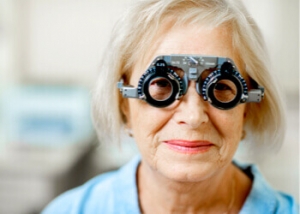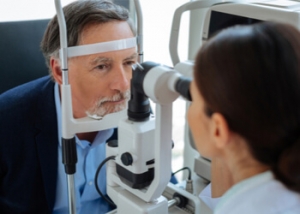Myopia Treatment Options To Slow The Progression
Myopia, also known as short-sightedness and nearsightedness, is one type of refractive error. It can occur alongside astigmatism, which is a type of refractive error involving multiple focal points of light through the eye, as well as in combination with presbyopia, the natural age-related deterioration of near focus. Research tells us that the prevalence of myopia is steadily increasing across the world, with projections predicting about 50% of the global population having some degree of nearsightedness by the year 2050.
What is Nearsightedness?
All refractive errors involve a fault in the coordination of the eyeball between its axial length (from front to back of the eye) and its refractive power (its ability to bend light to focus).
Nearsightedness occurs when the focusing power of the eye is too strong for its length. Alternatively, it can be thought of as the axial length of the eyeball is too long for its refractive power. Most cases of nearsightedness arise during school age and are due to a combination of genetic and environmental factors. However, adult onset myopia is not unknown.

Patients with nearsightedness will find that distant objects are blurry, such as when looking down the road while driving or trying to read the whiteboard while sitting at the back of the class. Conversely, near objects such as books and phones are likely to be easy to see clearly. The distance at which an object becomes blurry as it moves further away or comes clear as it moves closer will depend on a patient’s prescription – typically, the higher the prescription, the closer an object will need to be for it to be in focus. However, patients with a combination of myopia and astigmatism may find that objects are not quite clear at any distance.
We are still learning about myopia – what factors influence its development and progression, what myopia treatment strategies are most effective at preventing or slowing it down, and the health implications of having a myopic population. At this point in time we know that nearsightedness is related to an increased risk of multiple eye diseases, much more than simply being an inconvenient blur. Due to the elongated, stretched nature of a myopic eyeball, people with short-sightedness are at a higher risk of potentially sight-threatening diseases such as myopic maculopathy, retinal detachments, and glaucoma.
Myopia Treatment
Unfortunately, nearsightedness cannot be reversed or undone and the eye health risks that come with myopia are lifelong. However, apart from the eye health concerns that come with short-sightedness, the most obvious aspect that needs addressing is the blurry vision.
Traditionally, spectacles and contact lenses have been and will continue to be a popular solution for nearsightedness. However, as medical technologies advance, surgical procedures for the correction of refractive errors are gaining in popularity, providing a welcome independence for the inconvenience of glasses and contacts.
Myopia treatment is well served with refractive surgery as many of these methods are able to treat high levels of nearsightedness. The most suitable technique will depend on various factors such as the individual biometry of your eye, your prescription, your lifestyle, and even your age. Your surgeon will assess and discuss your suitability for treatments such as PRK (photorefractive keratectomy), LASIK (laser assisted in situ keratomileusis), ICL (intraocular contact lens), and one of the more recent innovations – SMILE® laser eye surgery.
SMILE® Laser Eye Surgery
SMILE® stands for small incision lenticule extraction and has been applauded in recent years due to its excellent safety profile and ability to provide great visual outcomes with reduced risk of complications.
During the SMILE® procedure, a femtosecond laser is used to create a pre-calculated, precisely shaped disc of tissue, known as a lenticule, within the corneal tissues. The cornea is the dome of transparent tissue at the front of the eye and is largely responsible for the total refractive power of the eye. The lenticule is then removed through a small keyhole incision at the surface of the cornea, resulting in an adjusted corneal curvature. The reshaping of this anatomical structure redirects the passage of light through the eye such that it ends up focusing where it should – on the retina for clear vision.
 SMILE® laser eye surgery is considered a minimally invasive procedure, which carries some significant benefits. Lower risk of post-operative dry eye: As fewer corneal nerves are disrupted with the SMILE® technique, patients with pre-existing dry eye may find this a more appealing option.
SMILE® laser eye surgery is considered a minimally invasive procedure, which carries some significant benefits. Lower risk of post-operative dry eye: As fewer corneal nerves are disrupted with the SMILE® technique, patients with pre-existing dry eye may find this a more appealing option.
Shorter recovery time: Because there is less disturbance to the corneal tissue, eyes that have undergone SMILE® are left with better biomechanical stability of the cornea, and as the delicate corneal epithelium is left intact, there is much less post-operative discomfort.
Reduced risk of trauma-related complications: One advantage of SMILE® over LASIK is that it does not require the formation of a corneal flap. In LASIK, corneal reshaping can only take place once the top layers of corneal tissue have been moved to the side in the form of a hinged flap. This flap is then repositioned but activities such as intensive physical activity, bumps to the head, or exposure to dirty environments can dislodge this flap or allow debris beneath it, causing inflammation.
Currently, SMILE® surgery can be utilised for patients with up to -10D of myopia.
If you suffer from nearsightedness, there are ways to slow its progression. Contact an on (03) 9070 3580 to schedule a consultation.
Note: Any surgical or invasive procedure carries risks. Before proceeding, you should seek a second opinion from an appropriately qualified health practitioner.






Leave a Reply
Want to join the discussion?Feel free to contribute!